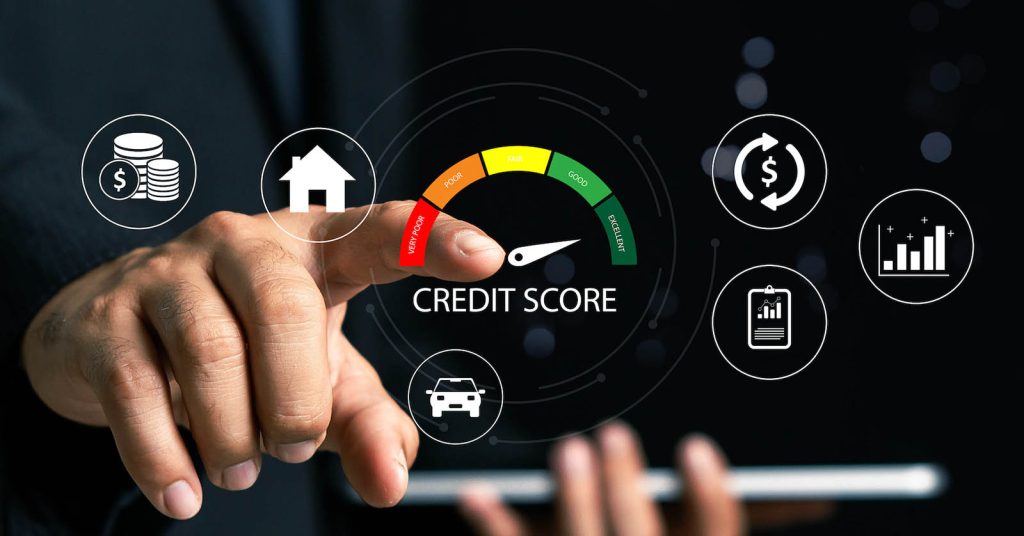Your credit utilization ratio is the share of your available revolving credit you’re using right now. Lenders and scoring models watch it closely because it signals near-term risk: maxed-out cards are more likely to default than cards with plenty of headroom. In FICO® Scores, utilization lives inside the “Amounts Owed” slice, which makes up about 30% of your score; VantageScore® also treats utilization as a major (often “highly” or “extremely”) influential factor. In practice, models look at both aggregate utilization (all cards combined) and individual card utilization (each card’s balance ÷ limit). There’s no magic line where crossing 30% suddenly “kills” your score, but lower is better, and big jumps above modest levels tend to cost points — especially if multiple cards are high. The simplest way to improve this factor is to either lower reported balances or raise available limits (or both). Tactics like paying mid-cycle, scheduling an extra payment before the statement closing date, requesting a credit-limit increase, or spreading balances across more total limit can move your reported utilization quickly. Below, you’ll see what utilization is (and isn’t), how it’s calculated, why it changes on specific calendar days, and the fastest, safest ways to bring it down — anchored to primary guidance from FICO, VantageScore, the CFPB, and the credit bureaus.
Key Takeaways
- What it is: Revolving balances ÷ revolving limits, tracked both per-card and across all cards. Installment loans don’t count in utilization.
- Why it matters: It sits in FICO’s “Amounts Owed” bucket (~30% of the score) and is a highly influential factor in VantageScore.
- When it’s measured: Most card issuers report shortly after the statement closing date — not the payment due date — so paying before close can lower the reported balance.
- No hard 30% cliff: 30% is guidance, not a rule; lower is generally better, and single-digit utilization tends to score strongest.
- Fast levers: Mid-cycle/early payments, second payments before statement close, CLIs (credit-limit increases), and strategically moving balances.
- Line cuts hurt: Issuer-driven credit-limit decreases can spike utilization even if you didn’t spend more — watch for notices and respond.
Utilization 101: Definitions, What Counts, and How Models Read It
Utilization uses only revolving accounts — credit cards and lines of credit — not installment loans like auto, student, or mortgages. Score math looks at two layers: aggregate utilization across all cards and the utilization of each card individually; both can move your number. Because it’s a risk proxy, the models penalize high ratios more than low ones, and multiple high-utilization cards can be worse than one high card with others near zero. In FICO Scores, utilization lives inside the “Amounts Owed” category, which FICO pegs at about 30% of your overall score; VantageScore’s materials likewise flag utilization among its most influential inputs, often listing payment history and utilization as the top two. You’ll see rules of thumb like “under 30%,” but that figure is consumer guidance rather than a model breakpoint — FICO itself notes there isn’t a single threshold where scores suddenly fall off a cliff, and many profiles score best in the single digits. Another subtlety: the number that “counts” is what the issuer reports, typically right after your statement closes, not what you owe on the day you pay; the statement balance becomes the figure most bureaus receive for that month. That’s why a mid-cycle or pre-close payment can drop the reported balance even if your real-time spending is variable. It’s also why a sudden credit-limit decrease — unrelated to your spending — can spike utilization without warning; CFPB research documents that line cuts mechanically raise utilization on impacted cards and across a consumer’s portfolio. Finally, utilization is dynamic: if you pay cards to zero and stop using them entirely, your reported utilization can fall to 0%; some people prefer to let one small balance report to avoid edge-case quirks, but there’s no requirement to “carry” a balance for scoring.
Reporting Mechanics: Statement Close, Due Dates, and Why Timing Wins
Most card issuers send data to the bureaus shortly after each statement closing date; the payment due date comes later. Because scores are computed from what’s in your reports, the balance that gets reported is often the statement balance, not the balance after you pay on the due date. If you routinely make purchases after your last payment and before the statement closes, you can still wind up with a high reported balance even if you always pay in full by the due date. The workaround is simple: make an extra payment before the statement closing date so the amount reported is lower — or temporarily lower the card’s usage during the last week of the cycle. Issuers’ help pages and bureau explainers highlight this distinction between current balance and statement balance, which trips up many cardholders. Some banks let you see the upcoming statement closing date in the app; pairing that with a calendar reminder creates an easy “pre-close payment” habit that keeps reported utilization in check. If you’re chasing a near-term score target (a mortgage, a refi), consider paying high-balance cards a few days before they close and avoiding new swipes until the statement generates. Even clearing a single card from 70% utilization down to under 30% before close can produce a noticeable score bump because you’ve improved both per-card and aggregate ratios. When in doubt, treat statement close as the “snapshot day,” and time your payments accordingly; several major banks explicitly mention that a payment before the statement closes can reduce the reported figure that month.
Common Myths vs. Model Reality
A durable myth says “keep utilization under 30%” as if 29% is fine and 31% is catastrophic. FICO pushes back on the idea of a hard cliff: there isn’t a universal threshold where scores instantly drop; impact varies by your overall profile, the number of cards with balances, and recent behavior. Another misconception is that carrying a balance and paying interest somehow “helps” your score; scoring models don’t reward interest payments — what they see is whether a balance reports and how large it is relative to the limit. A third myth is that only aggregate utilization matters; in reality, per-card utilization is also scored, and one maxed-out card can drag you down even if your overall ratio looks decent because other cards are unused. People also worry that paying a card to zero hurts scores; it doesn’t — having zero balances on some or all cards is fine (what matters most is avoiding high ratios where balances do report). Finally, you might hear that moving balances to a 0% balance-transfer card “doesn’t count” because the APR is low; utilization ignores APRs and looks only at ratios. That transfer can help if it lowers your per-card and aggregate ratios, but opening the new card also adds a new inquiry and account — tradeoffs you should weigh. Official FICO and bureau explainers, plus major lender education pages, consistently reinforce these points and clarify that utilization is a snapshot ratio, not a fee-paying contest.
Fast Ways to Lower Utilization (Ranked by Speed and Effort)
Make an extra payment before the statement closes. Because reported balances usually mirror your statement balance, an early payment can reduce what gets reported for the month with immediate effect. Many issuers confirm this in their education pages, and banks like Capital One explicitly note that paying early can lower utilization.
Pay multiple times per month on heavy-use cards. If you funnel daily spend through one rewards card, set mid-cycle payments so the balance never balloons near the limit; this keeps both per-card and aggregate ratios calmer.
Request a credit-limit increase (CLI). Higher limits lower the ratio mechanically if your spending doesn’t change. Some issuers do soft-pull CLIs; others may hard-pull — ask first. If an issuer cuts a limit, utilization can spike even without new spend; CFPB research shows CLD (credit-limit decrease) events raise utilization across affected consumers, so monitor notices closely.
Spread balances. If one card is 80% used and others are near zero, moving part of the balance (responsibly) so no single card is high can help per-card scoring — though avoid creating many small balances if you’re preparing for a manual underwrite.
Open a new card (strategically). Adding a card increases total available credit and can lower aggregate utilization, but consider the inquiry/age tradeoffs. If opening, do it well before a major loan so your file has time to season.
Use a balance-transfer card for breathing room. A transfer that consolidates high-utilization balances under a larger limit can lower both per-card and aggregate ratios; the APR relief is a cash-flow bonus, but the score effect is about ratios, not teaser rates.
Avoid line cuts and annual-fee closures right before big loans. Closing a high-limit card or accepting a line cut near an application can raise your utilization unexpectedly; keep useful limits open through closing if possible.
| Tactic | What it does | Time to impact | Watch-outs |
|---|---|---|---|
| Pre-close extra payment | Lowers the balance that gets reported this cycle | Usually next reporting cycle (often within days of statement close) | Know your statement closing date; avoid new swipes until it posts |
| Mid-cycle payments (multiple per month) | Keeps per-card ratios low between statements | Immediate on your account; visible at next bureau update | Requires calendar habit or autopay rules |
| Credit-limit increase (CLI) | Increases denominator of the ratio | Immediate after approval | Possible hard pull; don’t raise spending just because limit rose |
| Balance transfer to higher-limit card | Can reduce both per-card and aggregate utilization | When transfer posts and at next reporting | New account/inquiry tradeoffs; watch transfer fees |
| Open an additional card | Raises total available credit | After approval and first report | Short-term small score dip from new credit |
Frequently Asked Questions (FAQs)
What counts toward utilization?
All open revolving accounts (credit cards and personal/HELOC lines). Installment loans don’t count in utilization; they’re evaluated differently.
Is 30% the “right” target?
It’s a rule of thumb, not a hard cutoff. FICO emphasizes there’s no single magic threshold; many profiles score best in the single digits. Lower is generally better.
Why did my utilization jump even though I didn’t spend more?
Issuers sometimes reduce credit lines (CLDs). A limit cut raises the ratio mechanically and can lift aggregate utilization even if your balances are unchanged.
Do I need to “carry a balance” for my score?
No. Scores don’t reward paying interest. What matters is the reported balance/limit ratio at month-end, not whether you paid interest.
When should I pay to get the best utilization reported?
Before the statement closing date, since most issuers report soon after statements generate. Paying only on the due date may be too late for that month’s snapshot.
Does a balance transfer help utilization?
It can — if it lowers your per-card and aggregate ratios. The APR doesn’t matter for scoring; ratios do. Consider inquiry/new-account tradeoffs.
How influential is utilization in my score overall?
In FICO Scores, it’s inside “Amounts Owed,” about 30% of the score. VantageScore also treats utilization as highly influential among its top factors.
Sources
- FICO — What’s in my FICO® Scores (Amounts Owed ~30%)
- VantageScore — Factors that affect your score (utilization is highly influential)
- FICO — “What should my target utilization be?” (no hard 30% cliff)
- Experian — What is a statement balance?
- Experian — Current vs. statement balance
- Capital One — Paying a credit card early (lower utilization by paying before close)
- CFPB — Credit Card Line Decreases (CLDs raise utilization)
- Reg Z — §1026.53 Payment allocation (how issuers must apply amounts above minimum)
- Experian — Balance transfers & utilization
- FICO — Balance transfer effects (ratios matter, not APR)
- NCUA — Credit scores overview (Amounts Owed 30% example)









